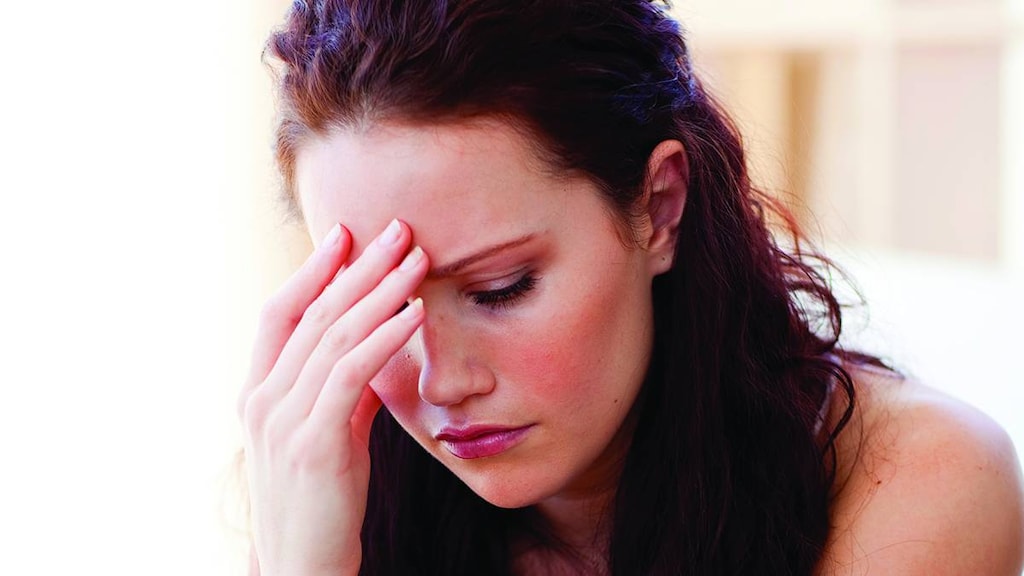Get Rid of a Migraine Fast! 10 Steps to Relief

You probably know that feeling of a migraine attack all too well. It may start slowly, with increasing discomfort and fatigue. Or perhaps it happens suddenly, causing intense pain and sensitivity to light or sounds.
Either way, whenever you feel a migraine coming on, you want relief right away. Here are 10 strategies to help you stop a migraine—fast.
1. Stay alert for early symptoms
Many people experience warning signs of an impending migraine, according to the American Migraine Foundation. Early symptoms—those that happen before the actual migraine begins—are called the prodrome, or prodromal phase. These symptoms may start a few days or even just a few hours before the actual migraine. They include:
- Irritability
- Frequent yawning
- Needing to urinate more
- Nausea
- Sensitivity to light and sound
About a third of all people who have migraines also have an aura phase about an hour before the migraine. Aura symptoms include numbness and tingling, temporary loss of sight and visual disturbances.
2. Act fast
Treating a migraine before it gets too intense can often prevent it from getting worse, according to Yale Medicine. If you have a reliable migraine pain reliever, take it at the first signs of an attack. Also, talk to your doctor about whether you should take medication in the prodrome or aura phase to lower the chance of having a full-blown migraine.
3. Get away from bright lights and sound
If possible, rest somewhere dark and quiet, advises the Mayo Clinic. Not only can bright lights and sound cause migraines, but they also can worsen a migraine if you already have one.
4. Use cold or heat
Place a cold or hot compress (whatever feels best) on your forehead or the back of your neck. Cold can help lower the pain sensation, and heat can soothe tense muscles. If you don’t have a cold compress or towel, try using a chilled soda can. A warm bath or shower also may help ease your migraine, the Mayo Clinic reports.
5. Grab a cup of joe
Caffeine can help migraine pain, and it can also help acetaminophen (Tylenol) work better. However, you only need a little bit. Drinking too much coffee (or any caffeinated beverage) can lead to yet another headache.
6. Drink water
Some migraines are caused by dehydration, and drinking at least 16 ounces of water may be enough to provide relief, according to the American Headache Foundation.
7. Remove anything resting tight on your head
Some migraine sufferers say that this simple step may provide relief. Remove tight items like a hat, goggles, headband or ponytail holder before they cause an external compression headache. External compressions headaches can lead to a migraine in people who suffer from them, if the item causing the compression is worn for a prolonged time.
8. Take a break
Studying or staring at a screen for long periods of time can make a headache worse. Take a break to close your eyes at least for a minute and take a few deep breaths. If you can, try to get some sleep.
9. Consider acupuncture
The ancient Chinese practice of acupuncture is associated with relief from headache pain. Acupuncturists use tiny needles to work with the body’s qi, or energy. If you're open to trying it, or if acupuncture has helped you in the past, make an appointment as you feel a migraine coming on.
10. Be prepared
If you're prone to migraines, always have your preferred migraine treatment with you. Prepare a migraine emergency kit that includes your medication, a warm/cold compress and anything else that brings you relief. That way you know you can act fast if you feel an attack coming on.
One last suggestion: If you’re not sure what’s causing your migraines, keep a migraine diary where you can record:
- What you ate just before the migraine started
- Weather conditions
- Additional or unusual stress
- Any changes to your routine, especially sleep
Reviewing these notes can help you spot migraine trends over time and provide a good reference to discuss with your doctor at your next appointment.
Article references
- American Migraine Foundation, The Timeline of a Migraine Attack, https://americanmigrainefoundation.org/resource-library/timeline-migraine-attack/
- American Migraine Foundation, Acute Migraine: Treating Early, https://americanmigrainefoundation.org/resource-library/acute-migraine-treating-early/
- Yale Medicine, When You Get a Headache, Don't Just Take an Over-the-Counter Pain Reliever, https://www.yalemedicine.org/stories/new-strategy-for-headaches/
- Mayo Clinic, Simple Steps to Head Off the Pain, https://www.mayoclinic.org/diseases-conditions/migraine-headache/in-depth/migraines/art-20047242
- National Headache Foundation, Your Migraine, Your Symptoms: What You Need to Know, https://headaches.org/wp-content/themes/bridge-child_nhf/documents/161024_LOT-A_MigraineSymptoms.pdf
- National Headache Foundation, Headaches and Dehydration, https://headaches.org/2016/07/07/headaches-and-dehydration/
- National Headache Foundation, Acupuncture, https://headaches.org/2007/10/25/acupuncture/
- Krymchantowski AV, Headaches Due to External Compression. Curr Pain Headache Rep. 2010 Aug;14(4):321-4. https://link.springer.com/article/10.1007%2Fs11916-010-0122-x


